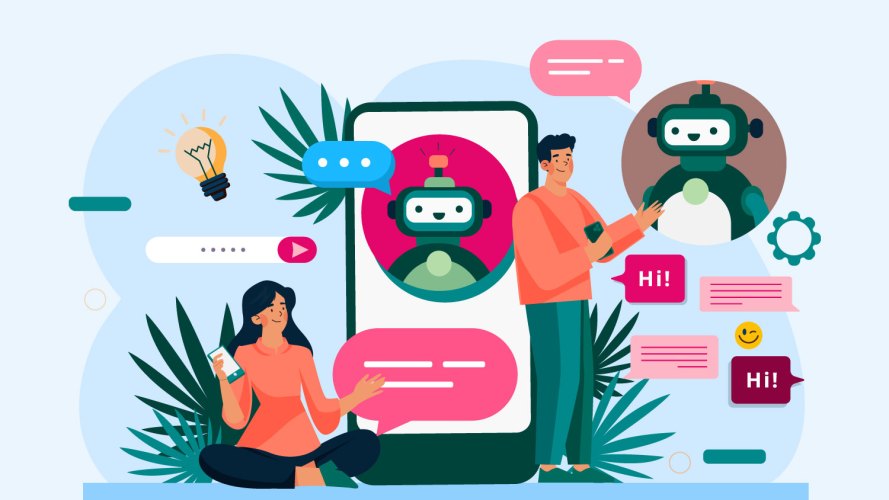How AI and Automation Create Proactive Customer Service Magic



This is how smart businesses use automation to transform customer service from a reactive task to a proactive force that enhances the customer experience.

Judith Platz
At first thought, visions of automated customer service might bring eye rolls. You think of trying to navigate static, unhelpful automated call systems or pounding the keys of your keyboard at an unresponsive chatbot. These are relics of an antiquated mentality that still pervades too many companies.
The very term “call center” is rooted in a decades-long history of companies using technology to keep customers at arm’s length rather than embrace them. Once upon a time, companies would seek metrics analyzing how quickly they could get customers off the phone. That same attitude led us to use tools such as chatbots to build new versions of the same walls.
Learn to drive better agent engagement
These tips can help your team strengthen your contact center and better serve your customers by making work more satisfying for agents.



“One of the most common conversations right now in customer service is how to automate self-service and drive more customers through channels that don’t tax human resources. But this lack of imagination hinders the true possibility of artificial intelligence (AI) and automation to make service more human and even enchanting,” said Salesforce Global Innovation Evangelist Brian Solis.
In today’s world, the role of customer service should be far more strategic, personalized, and proactive than it ever has been. The purpose of automation in customer support should not be to replace human functions. Rather, it should unleash the human capacities of both customers and the teams that support them. Smart businesses are using automation to transform customer service from a reactive task to a proactive force that will enhance the customer experience with a magical touch. Think of the difference between having to share an Amazon wish list with your significant other and receiving a perfect, unexpected gift.
Increasingly, business leaders are recognizing that service organizations are the secret sauce they didn’t realize they had. AI allows us to move beyond those boring conversations about response times and case management and totally reimagine what customer service means.
Customers are seeing this, too. A survey by Gladly found that 82% of customers will spend more on brands that deliver great service. In a recent series on digital transformation, analysts from Deloitte Insights argued that companies should turn their customer support teams into “customer advocacy” organizations. This is because customers’ expectations are rising. “In today’s service-led and continuous-engagement model, customer service and support has become the most critical component of customer satisfaction,” the Deloitte Insights team wrote.
Customers won’t tolerate being just a number. Additionally, the volume and velocity of support requests is rising, and the nature of service is becoming increasingly digital, which demands more automated and intelligent support systems and processes.
You’ve heard the old sales motto of ABC: Always Be Closing. In support, it must be ABQ: Always Be Questioning. For companies who have found customer service success, transformation is not just a single aha moment – it’s an ongoing process of self-evaluation and action. Here are some ways that automation can help us move toward a proactive customer service world.
Build systemic empathy with proactive customer service
When many organizations started out with AI, they were thinking about how they could use it to deflect cases from their agents: Why use a human being to accomplish a rote task that could be effectively completed through interactive voice response or a chatbot?
But the reality is that smart companies are using AI to guide and track user journeys in far more targeted and precise ways. Many users don’t want to access the call center; they just want their problem solved. They don’t start their journey with a 1-800 number – they start it with a search engine. This is where empathy must begin.
Using AI, customer support teams have the capability to wire bots to listen to tone and sentiment and to let the system know the most appropriate time to take a user’s journey out of the digital space and onto the phone. To the customer, this feels seamless. Support organizations can set customers up to resolve their problems quickly and painlessly.
“Empathy, friendliness, connection, working to build rapport – all of that matters as much as the service you provide and the quality of the product,” said Myra Golden, a customer experience designer who works with Fortune 500 companies on building their customer-facing empathy skills.
But empathy has to be more than just an idea floating in the ether. It has to be a practice catalyzed by technology and incentivized by business leaders. As Golden pointed out, you can be the most empathetic and caring service agent in the world, but if your company is not equipping you with the tools to solve problems, it won’t matter.
Many customer service horror stories stem from situations in which customers want one thing but companies are pressing agents to offer something else. For example, customers may simply want to cancel their cable service but find themselves up against call-center agents who are tasked with trying to upsell them on a more expensive package.
We can use automation and machine learning to prevent those situations by looking closely at the data from our service interactions. We can record interactions and analyze the vocabulary used by customers to drill down on exactly what they want. Those insights equip agents with a digital crystal ball that helps them not only prevent escalations, but also resolve problems before they even form.
Empower service agents behind the scenes
Have you ever found yourself typing a detailed response to a question posed by a chatbot, only to then be redirected to a customer service agent who asks you the very same question? Have you ever typed your bank account number on your phone, only to be asked to say that number aloud once you reach an operator?
As a person who has spent their entire career in support, I find these bottlenecks the most frustrating. Forward-thinking support organizations are embracing technology that smoothes the process for users by empowering service agents with the knowledge they need to help them help you. AI can act as a silent partner with customer service agents to help them create special experiences.
Imagine reaching a support agent who instantly has a precise record of the steps you have already taken. Beyond that, imagine that the agent has an AI tool at their disposal that can pull up related assets in real time based on keywords it hears during the call.
But it doesn’t stop there. Because the agent’s rote tasks have been automated, the agent has the time and energy to focus on your case – and the tools to solve it. For instance, instead of passing your tough case on to a higher tier of support, to a person who is not invested or familiar with it, the agent may be able to activate a bot that can open a Slack window and immediately ping colleagues from across their organization. Miraculously, five people appear to work alongside the agent who has ownership of your case.
Instead of waiting for answers on hold, you are getting real-time updates from your agent. As all of this is happening, the same bot is mining the Slack conversation your agent and their colleagues are having and turning it into a knowledge article that can be published on the company website so that the next person who has this problem can solve it on their own.
This is where support teams can prove their mettle to the C-suite. AI tools can position service agents to not just solve problems but also add value – value that shows up in the form of customer experience and business metrics.
“We have to shift our mindset to consider the adoption of AI and automation as an investment in productive and value-added customer engagement,” said Solis. “I think a lot about that old adage ‘Think like a startup.’ When a startup has to convey that they’re going to create a new opportunity, they justify it with data. The same thing is true here as well. We know that done right, service delivers better experiences, cultivates loyalty, and delivers net-new revenue. We know it drives growth. So we have to communicate in that way.”
Never stop transforming your proactive support team
We are in a renaissance of support, and executives are beginning to recognize that their service organizations are not merely passive cost centers, but laboratories for big ideas, and a pivotal point of interface with customers. Increasingly, support executives are acting as digital transformation officers. Instead of being siloed, they are reporting directly to CEOs and chief customer officers. The insights and data gleaned by service teams are becoming crucial not just for improving their own processes as they support customers, but for helping businesses grow and innovate across departments.
It takes a certain kind of person to make a career in support. You have to be willing to come to work every day and jump from problem, to problem, to problem. You rarely get the opportunity to celebrate some amazing project that has just reached completion, because by the time you finish it, a new challenge has materialized. But getting ahead of those challenges is exciting – and it’s what the future of support looks like.
We now have the capacity to see into the future and solve problems before they even exist – and even before customers know they might exist. This is crucial. The less effort it takes to be a customer, the more likely it is that a customer will be loyal. When given the tools to succeed, support teams can get ahead of future costs and build that loyalty.
“A lot of this comes back to the original conversation about how we define customer service,” said Solis. “We have to break it out of that contact center mentality. We have to think about service in the way that the Four Seasons thinks about service. It’s a way of developing loyalty, making you feel special and valued, and proactively looking for ways to deliver you that better experience. Customer service represents the potential for a competitive advantage.”
The future of support is proactive. It’s listening to customers and finding ways to solve their problems before they become problems. It’s using the tools of automation and AI to evolve in a way that is purposeful, humane, intuitive, and empathetic. By necessity, we are constantly rethinking the products we sell and the services we offer. The same must be true in support.
This article originally appeared in Vantage Point, a Salesforce magazine


























